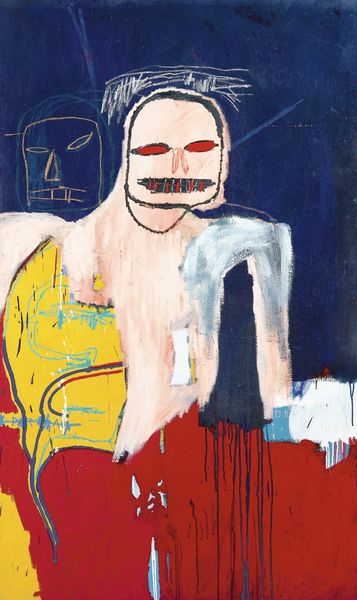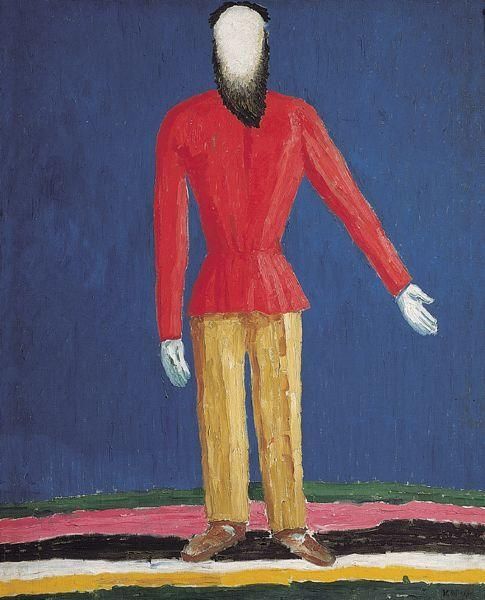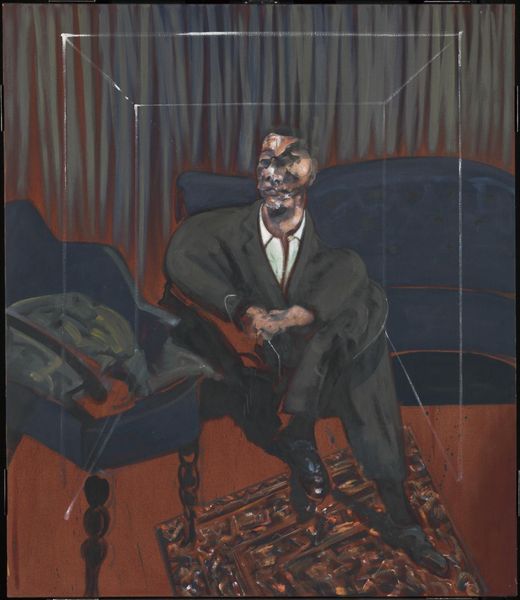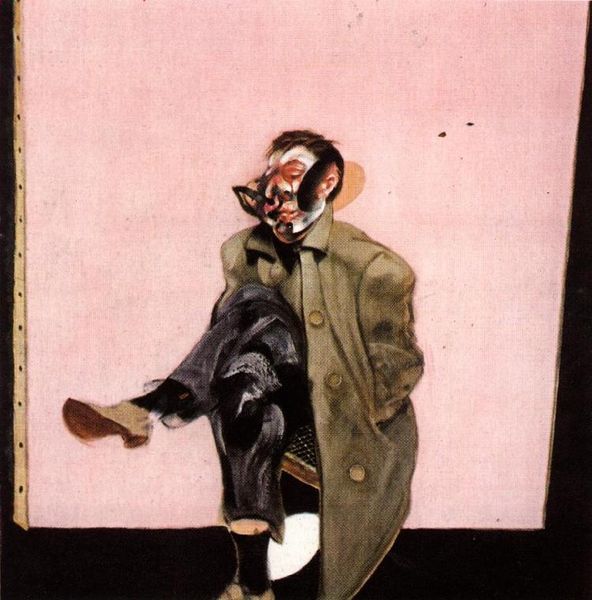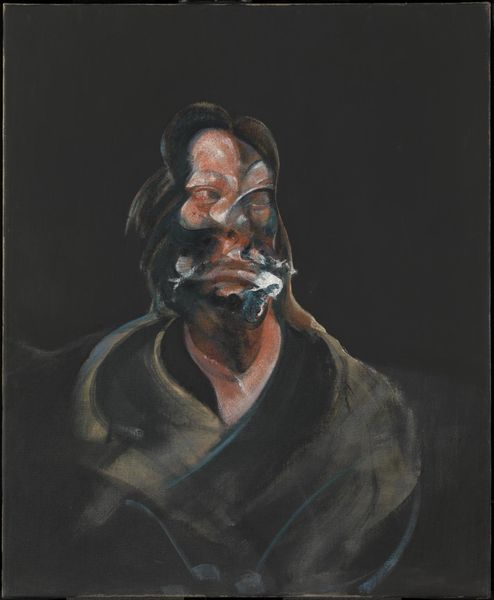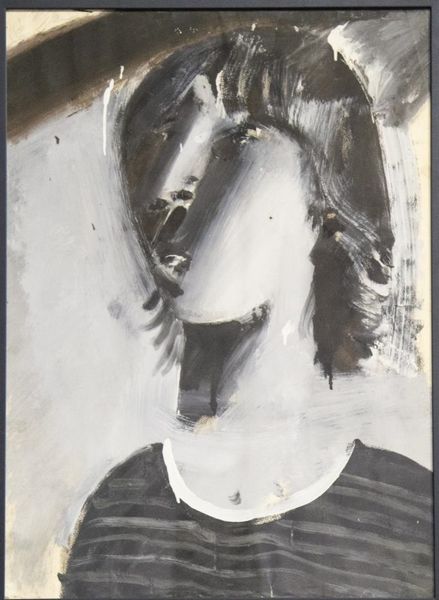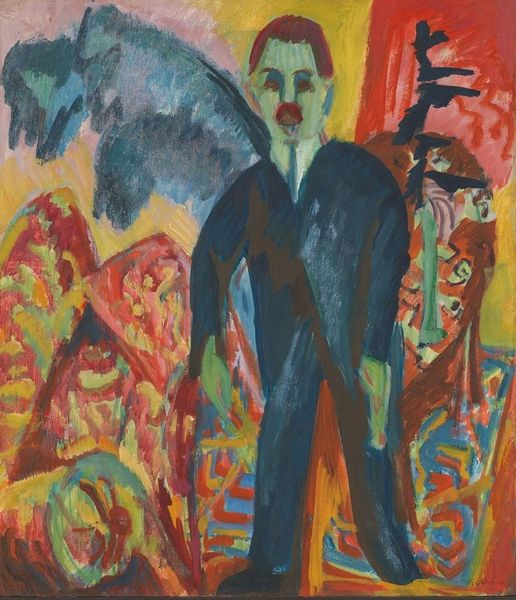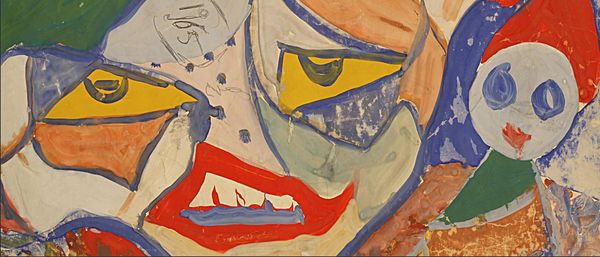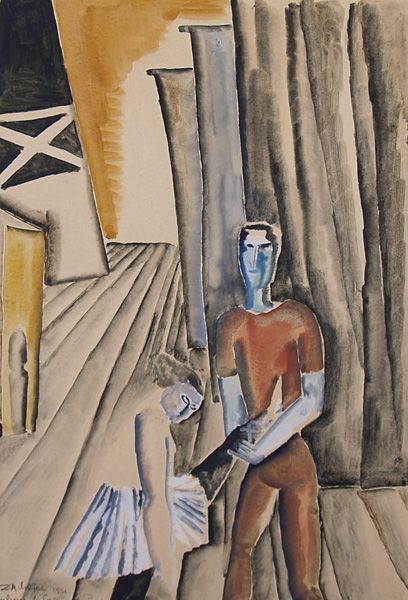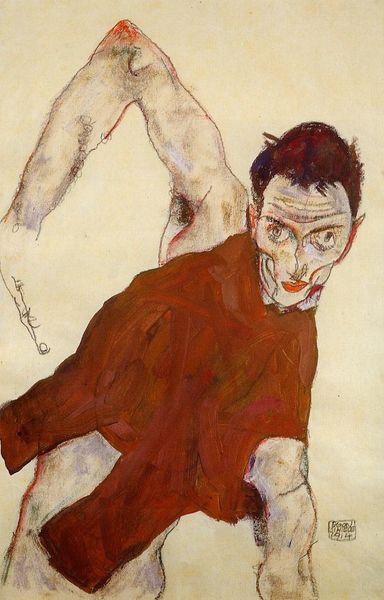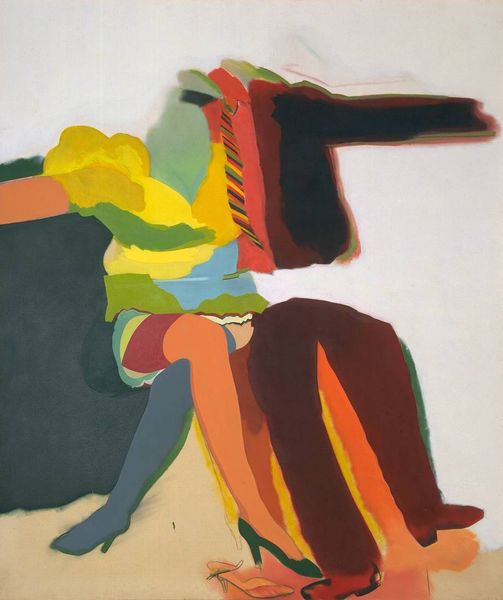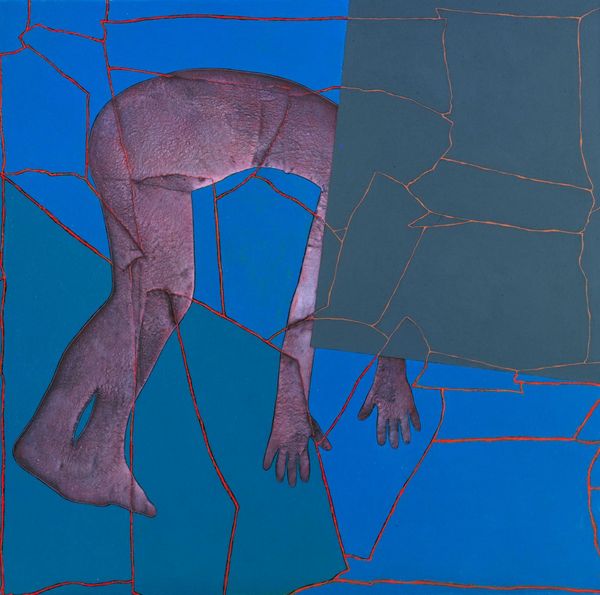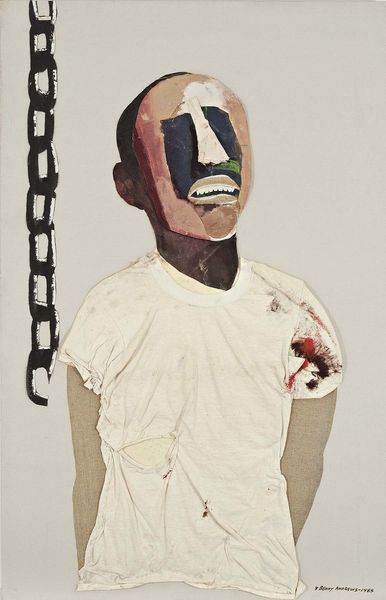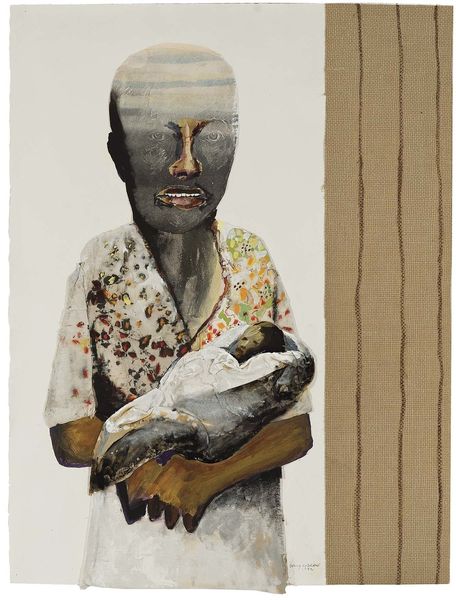
Copyright: Francis Bacon,Fair Use
Curator: What strikes me immediately about this 1962 oil painting, *Study for a Portrait of P.L.* by Francis Bacon, is the feeling of unease and distortion. There’s something almost viscerally unsettling about the figure’s face. Editor: Yes, that distortion definitely grabs you. For me, it's the almost careless, rushed application of the paint that really stands out. It feels like Bacon wasn’t interested in meticulous detail. The materiality speaks to a kind of frenetic energy, almost a disregard for the conventional polished surface we associate with portraiture. Curator: Bacon’s practice challenges those conventional portrayals of power. We should think about his influences—post-war existentialism, the focus on the fragility and instability of the human condition, or his identity as a gay man navigating a heteronormative world. Those realities inflect how we understand the emotional intensity in his work. Editor: Absolutely. Looking at the process informs that understanding. The raw canvas showing through, the visible brushstrokes – it all points to the physical act of making. It becomes almost a documentation of labor and intentionality, not merely a finished product. Curator: And how the horizontal bands confine the figure. Those stripes read, to me, as representative of constraint, and also isolation. Is he imprisoned or simply trapped by his existence? How much of Bacon’s own subjectivity informs our viewing experience? Editor: True, though that ground—and those horizontal bands, which serve almost like theatrical flats—are equally significant materially. He has built up these planes, giving texture to something deceptively flat, while rendering his sitter unstable and caught within the matrix of their coming-into-being. The raw energy is incredible. Curator: Bacon certainly captures an intense sense of human vulnerability in the modern era, the type that simmers below polite facades and reflects society's unspoken contradictions. Editor: Well, on reflecting, I would agree that the materials convey that tension poignantly, especially the blurring between a highly rendered subject and the background, bringing into sharp relief the way in which a material articulation also presents ideas of historical contingency.
Comments
No comments
Be the first to comment and join the conversation on the ultimate creative platform.
